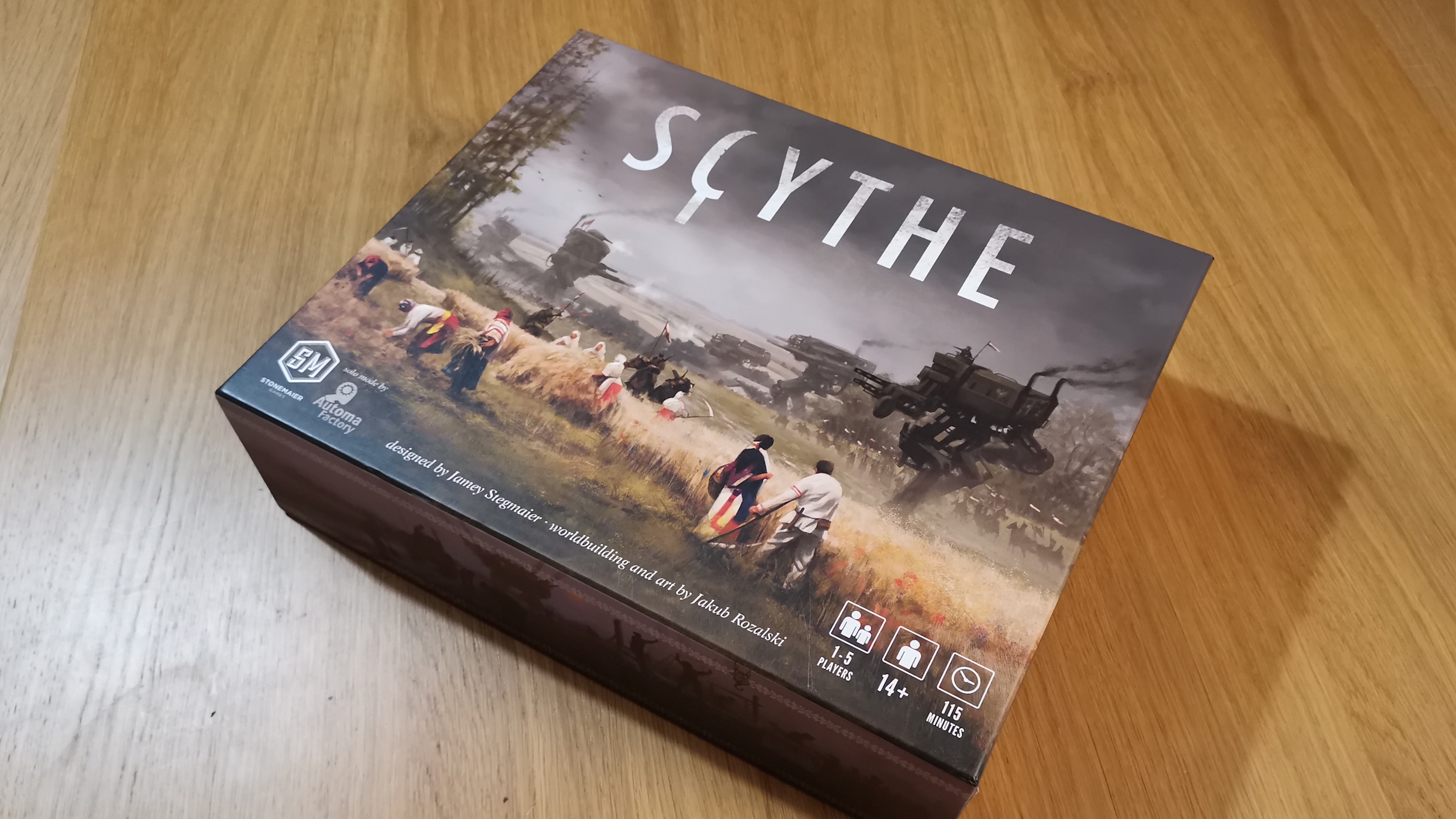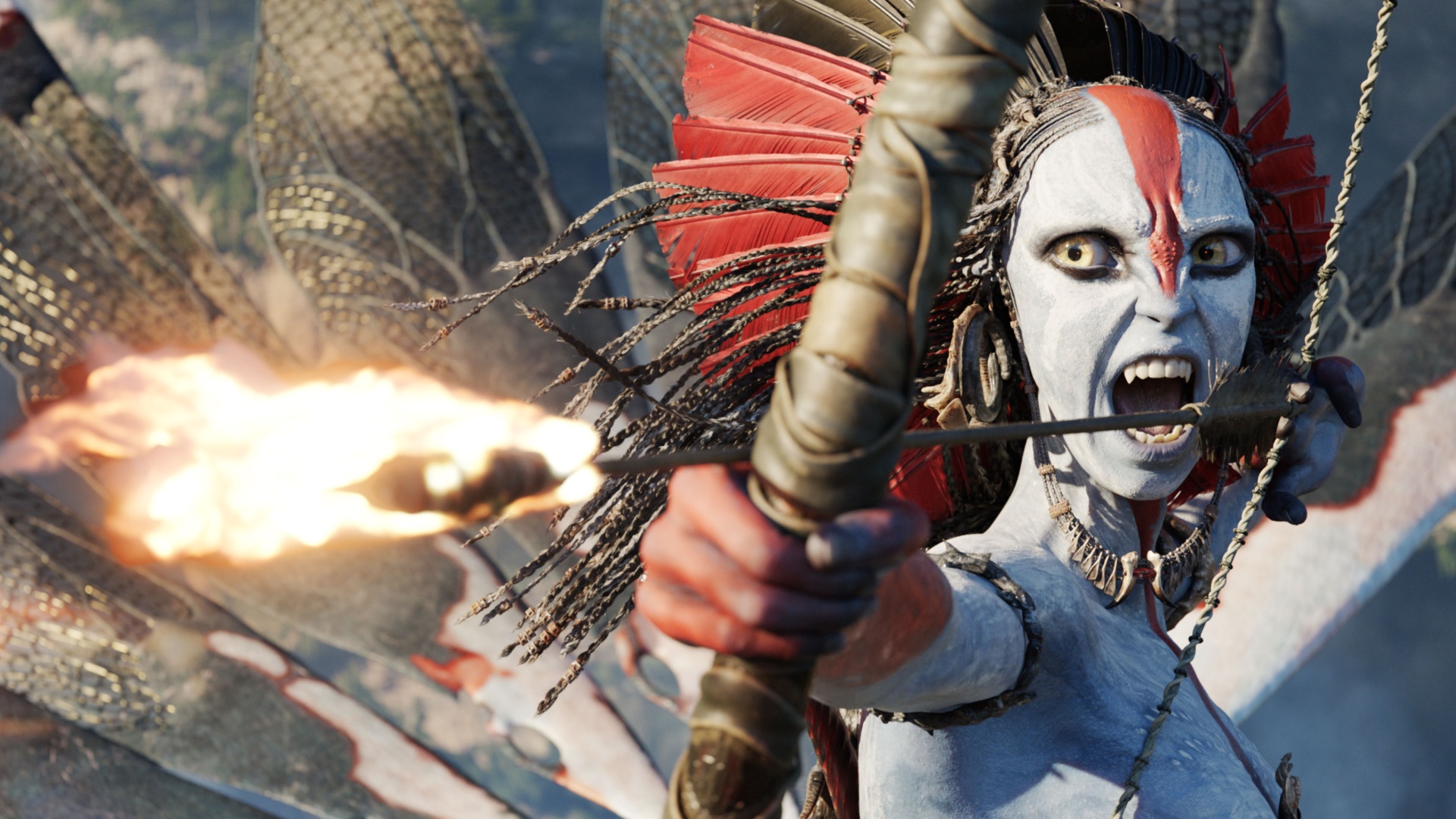Of Sanity Systems & Gameplay Loops: Gamings weirdest patents
Figure 5 shows something totally silly
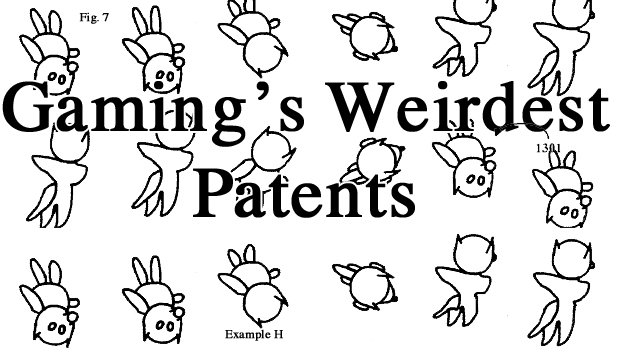
Patently silly
Technology advances absurdly fast. Most of today's cell phones have more computing power than the computers that took a rocket to the moon. Sure, we're not sending ships into orbit with our phones--but we've got Angry Birds Space, and that's pretty close. A lot of tech breakthroughs come in leaps and bounds in part because of patents. They're designed to help encourage innovation and the sharing of ideas. Of course, there are some ideas that are probably best left on the drawing board. We've collected 10 of the weirdest patents in gaming, which range from bizarre to rudimentary to downright unnecessary. It's patents like these that make us think the folks in the patent office don't even read things before approving them.
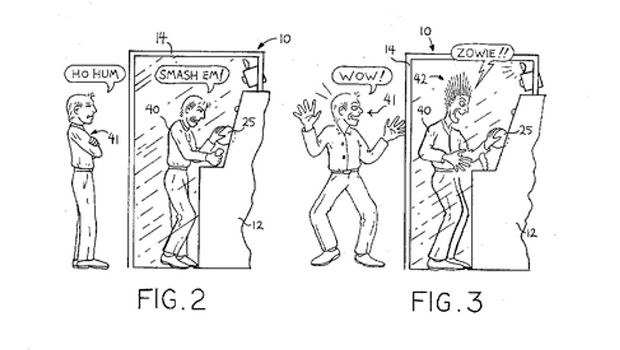
Taking "shock factor" literally
From the Patent: Apparatus for a video arcade or other game, including an electrostatic generator for generating a high voltage low current electrostatic charge, an electrode coupled to the generator for providing the electrostatic charge to a player, and control circuitry responsive to a control signal from the game for actuating the electrostatic generator to provide the electrostatic charge to the player.
The biggest change in the gaming industry in recent years is how we interact with games. New controllers--or the absence of them altogether with the Kinect--have given players new ways to manipulate what happens on the screen. If the next step is making the game communicate back to us, then beware of any game utilizing U.S. Patent 4,553,748. Filed in the '80s, this patent sets the framework for a game that will literally shock you while you're playing. The patent also calls for an "isolation booth" to contain the player and refers to the device as an "electrostatic enhancement apparatus." We don't think they know what the word "enhancement" means.
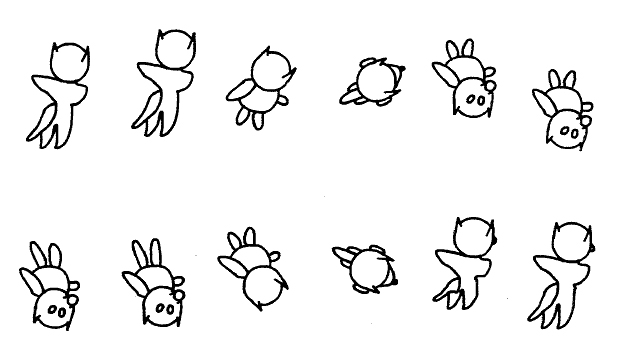
Sega gets Loopy
From the Patent: A method is provided for controlling the appearance of a video game game character, as the character traverses a path displayed on a display screen...The method comprises the steps of: displaying a banked path segment in which the game character is displayed upright at at least one location on the banked path and is displayed upside down at at least one other location on this banked path.
Sonic the Hedgehog is best known for his speed, but that's not his patented move. Back in 1993, Sega thought it best to protect a proprietary piece of Sonic: the loops. The almost-3D bridge-substitutes of Green Hill Zone were such an enviable invention in Sega's mind that it took the time to patent it. Not wanting the concept to fall into the hands of any competitors, Sega made sure to be extremely thorough in the process, taking nearly 200 words to explain in excruciating detail exactly how a loop works.
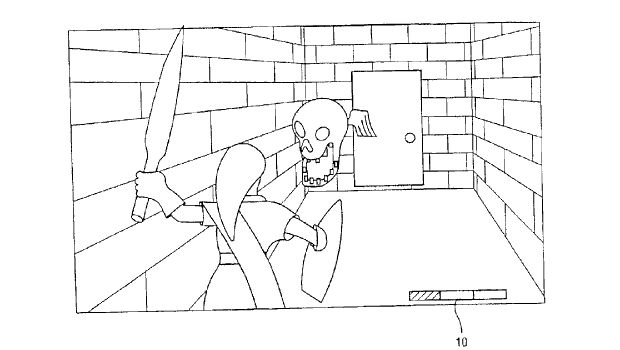
Nintendo owns insanity
From the Patent: A video game and game system incorporating a game character's sanity level that is affected by occurrences in the game such as encountering a game creature or gruesome situation. A character's sanity level is modified by an amount determined based on a character reaction to the occurrence such as taking a rest or slowing game progress and/or an amount of character preparation. That is, if a character is prepared for the particular occurrence, the occurrence may have little or no affect on the character's sanity level. As the character's sanity level decreases, game play is effected such as by controlling game effects, audio effects, creating hallucinations and the like. In this context. the same game can be played differently each time it is played.
Nintendo prides itself in being an industry leader in innovation; whether those innovations are welcome or not is an entirely different question. One of the creations that's since been left on Nintendo's cutting room floor is the Sanity System. They patent protected the concept of an in-game monitor that would change the game based on a character's mental health. This idea would be great if Nintendo made an M-rated title that could make proper use of it, but as it stands, Nintendo's best bet is to re-create the Mushroom Kingdom's penchant for psychedelic drugs.
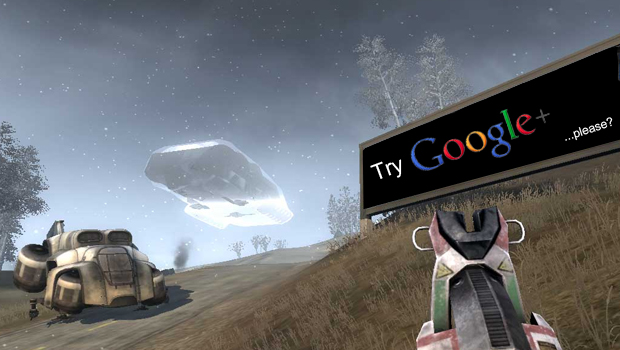
Google's FPS: "Target Market"
From the Patent: Information about a person's interests and gaming behavior may be determined by monitoring their online gaming activities (and perhaps making inferences from such activities). Such information may be used to improve ad targeting. For example, such information may used to target ads to be rendered in a video game being played by the person.
Google is the friendly version of Skynet. If it continues on the route it's been taking, we won't have to go out of our way for anything--Google will automate every aspect of our lives for us. One step toward this frightening and/or awesome future is one of the search giant's patents: advertisements based on actions in a video game. Think of the possibilities. If you're a marathon gamer, you'll be presented with offers for energy drinks; choose the sniper class a lot in FPS titles, and you'll get ads for tents and camping supplies. Who knows--maybe if you log eighty hours a week in a game, you'll start to see ads for anonymous support groups.
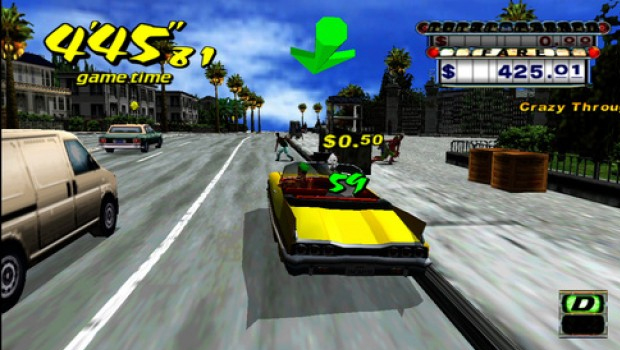
Crazy Taxi, Crazier Patent
From the Patent: A game display method displays a driving game which permits characters to be present in a city and can prevent cruel images of collisions with characters.
When Sega released Crazy Taxi in 1999, gamers immediately appreciated its addictive gameplay, unique style, and challenging difficulty. Yet few knew just how groundbreaking Crazy Taxi was. Those familiar with U.S. Patent 6,200,138 know the arrow navigation system that appears in Crazy Taxi is a Sega-owned idea. The all-knowing, omnipotent arrow is one of the few lasting legacies to carry on from the Dreamcast era. The patent says the arrow "can prevent cruel images of collisions with characters." This is why Grand Theft Auto doesn't have a directional arrow--that game wants players to see the "cruel images of collisions."
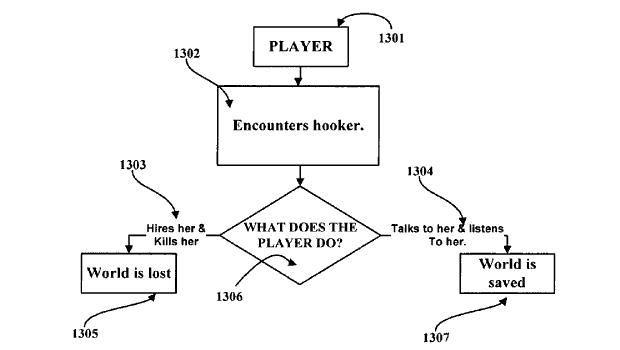
Player Encounters Terrible Idea
From the Patent: A video game method and system for creating games where ideas have consequences, incorporating branching paths that correspond to a player's choices, wherein paths correspond to decisions founded upon ideals, resulting in exalted games with deeper soul and story.
There are some games that'll never see the light of day and it breaks gamers' hearts. Then there are games that should probably stay in development hell for the good of everyone. We're not sure which side of the fence Dr. Elliot McGucken's game concept sits on, but we fear the series of events that would occur for it to become a reality. His patent lays out scenarios like, "Player Encounters Hooker" and the oh-so-descriptive, "Player Encounters Plot Point in Game." One situation gives players the choice between using "Jesus's Words" to "bring peace and freedom to the world," or "other words" to "Bring suffering/war to the world." There are communist vampires. If this game were to be made, we can only hope for a title screen that says, "Based on a true story."
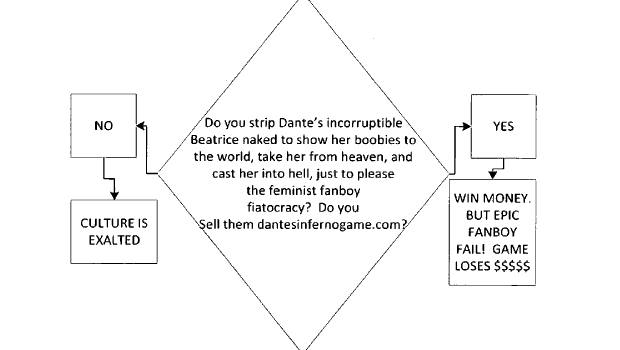
Heroic patent of heroism
From the Patent: The Hero's Journey Mythology Code of Honor Game Engine is presented, as well as novel spy games, wherein players fake ideologies in word and deed to gain access to groups and subvert them.
We all have complaints about games, especially when one tells a time-honored tale that isn't handled properly in the eyes of fans. Most of us stick to posting vitriolic attacks under anonymous names on message boards like any normal person would do, but some disgruntled gamers take things the extra mile. That's the case with U.S. Patent 20,120,052,930, which lays out the ground work for a specific game type while taking not-so-subtle shots at Electronic Arts' attempt at bringing Dante's Inferno to life in game form. The patent does its pitiful best to describe how to handle a "heroes journey" game, but all attempts to veil its true intentions disappears with lines like, "EA stripped Dante's beloved Beatrice naked to sell her boobies to the world, taking the incorruptible angel from heaven and casting her into hell."
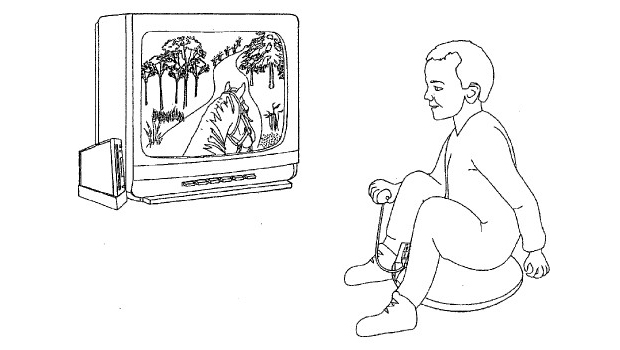
Horseback riding simulation
The key to a good simulation game is giving players an accurate feel for the re-created activity. A great way to do that is with an extra peripheral that better represents the duplicated act. Somewhere in Nintendo headquarters, someone decided that a horse riding simulation game would benefit greatly from a new device. Having players buy an actual horse and ride it while holding a Wii Remote was too impractical, so Nintendo filed a patent for an inflatable saddle. Sadly, with the original Wii fading away, we're afraid that Nintendo may take this patent out behind the shed.
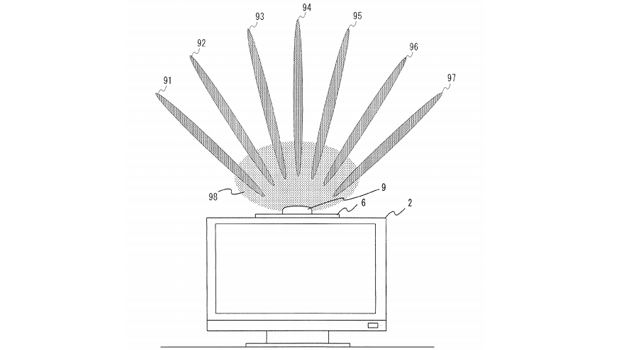
A spotlight for your bad decisions
From the Patent: A lighting system capable of receiving a signal from the information processing device. The information processing device includes a receiving means and a light projection control means. The receiving means receivesinstruction data to show an instruction to emit light from the lighting system according to the image and/or sound of television broadcast.
Like any medium of entertainment, games benefit from the proper surrounding environment. You wouldn't watch a horror movie with all the lights on, or an action flick without popcorn. At one point, Nintendo had an idea for a peripheral that would help gamers set the proper mood during their gaming experience. The device was designed to sit atop a user's television; it would then display a range of 256 colors which would vary based on events in the game. Firing a gun might beam bright yellow like a muzzle flash, while taking damage would be reflected with red. We're curious as to what color it turns when a player feels immense amounts of regret for purchasing the peripheral, or goes into a full-on seizure.
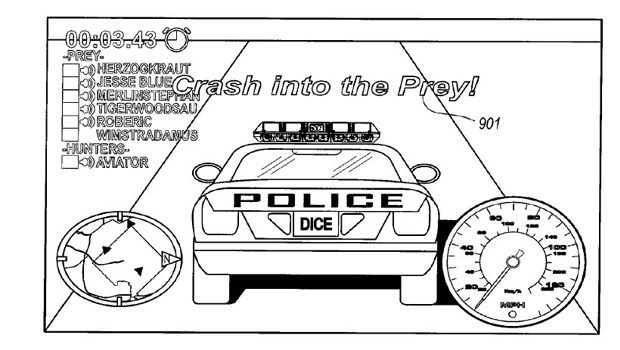
Like "Tag" but worse
From the Patent: During the multi-player computer game, players are either identified as a predator or as prey. The predator players attempt to catch the prey, and the prey-players attempt to evade the predator(s). When a prey is caught, the caught prey becomes an additional predator.
Remember playing tag as a kid? It was way back in the day when we were young and forced to actually leave the house occasionally. Those were dark times, but tag usually has fond memories attached to it. It's one of the first games you learn, likely because the rules are so basic: One person is "it" until he or she tags another person, who is then "it" until tagging someone else and so on. It usually continues until that one kid that cries whenever tagged starts bawling. That simple game has been patented by Microsoft, with the slight twist that cars are involved. Any video game that uses cars to play tag, named "predator and prey" in the patent, has to pay Microsoft a royalty. We have a feeling that isn't the source of Microsoft's wealth.
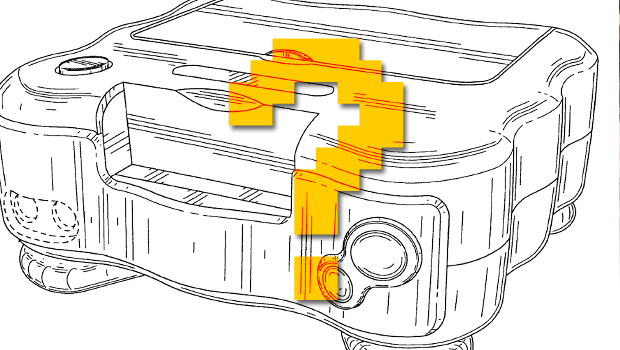
More patents, more problems
Patents are a strange beast. On the one hand, they protect ideas from being stolen, but on the other hand, it allows companies to... essentially do just that. Like, we're pretty sure Microsoft didn't invent tag, but... whatever. As long as the game is good, right? ...right?
And if you're looking for more examples of things that are like other things, check out why it's alright to be a rip-off (as long as you're good ad it) and a board game that'll remind you of XCOM: Enemy Unknown.
